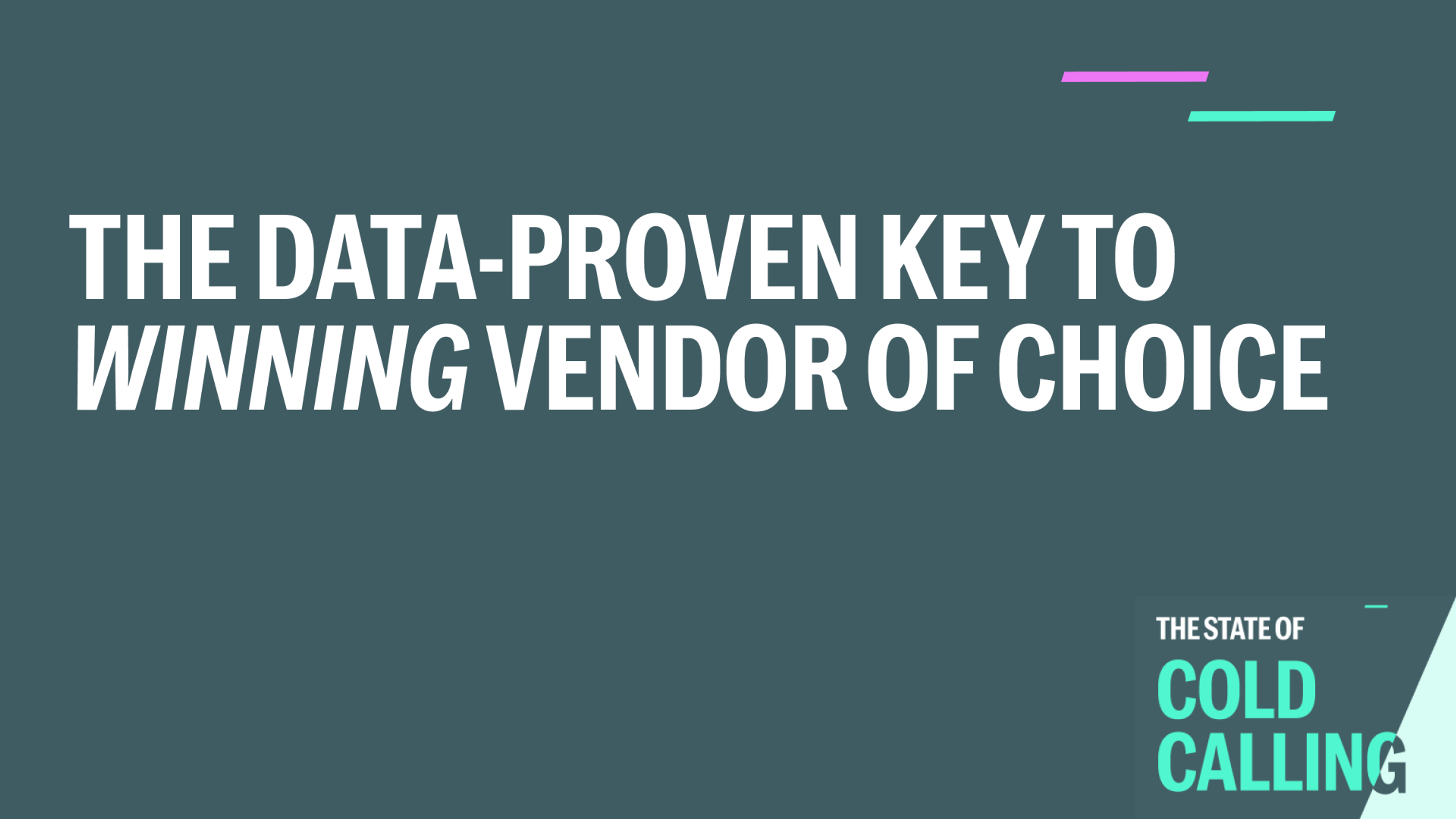Sales and Operations Planning Process Guide for Maximizing Sales

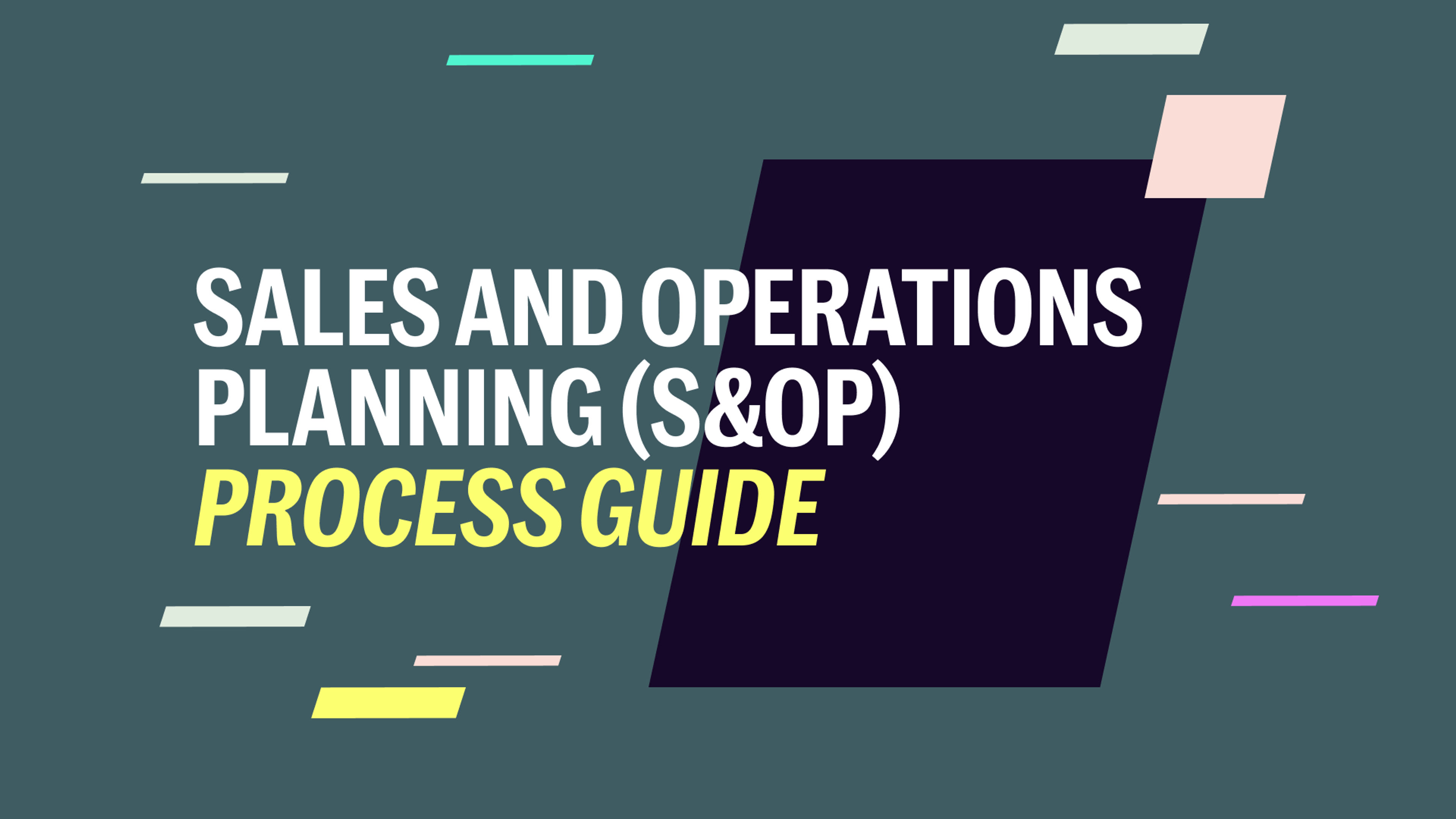
When sales and operations don’t align, businesses suffer. Forecasts miss the mark, resources get wasted, and you fail to meet customer demand. Over time, this hurts your growth, even when your team is working hard.
This is why Sales and Operations Planning (S&OP) is so important. It puts the entire organization on the same page.
A good S&OP plan brings sales, operations, finance, and leadership together under one unified strategy to create predictable growth. As a result, everyone’s clear on priorities and understands how their work contributes to the common goal. Decision-making is easier, business planning less stressful, and you typically encounter fewer bottlenecks.
In this guide, you’ll find practical steps and effective strategies to build an S&OP process that maximizes profitability and supports sustainable growth.
Use real-time insights to align S&OP
Orum helps sales and RevOps teams stay connected with automated dialing, live analytics, and seamless integrations, so you can prioritize the right leads and drive growth.
Request a demo
Key concerns of S&OP for enterprise sales
For enterprise sales, maintaining consistent revenue growth requires three key things: Precision, speed, and alignment. Precision is needed to balance demand plans with supply plans, speed up the quick response to any changes in customer demand, and ensure alignment to ensure all teams are working as one.
But when your sales team struggles with limited time and resources, how do you overcome that? And what about miscommunication and siloed information across departments that cause confusion and slow decision-making? Let’s take a closer look.
Aligning sales and operations to meet revenue goals
Aligning sales and operations can be challenging, but the goal is to answer the following three questions:
- What are the revenue goals that are realistically achievable with current resources?
- How can we work smarter to surpass the existing goals?
- How can we together ensure predictability and firmer control over future growth?
Sales teams often find themselves bogged down by repetitive tasks. This limits their capacity to engage with high-value leads.
You can implement AI dialing solutions and automated workflows to prevent this from becoming a blocker.
For instance, platforms like Orum automate the dialing process, enabling sales reps to connect with multiple prospects simultaneously. This ensures your team spends less time on manual tasks.
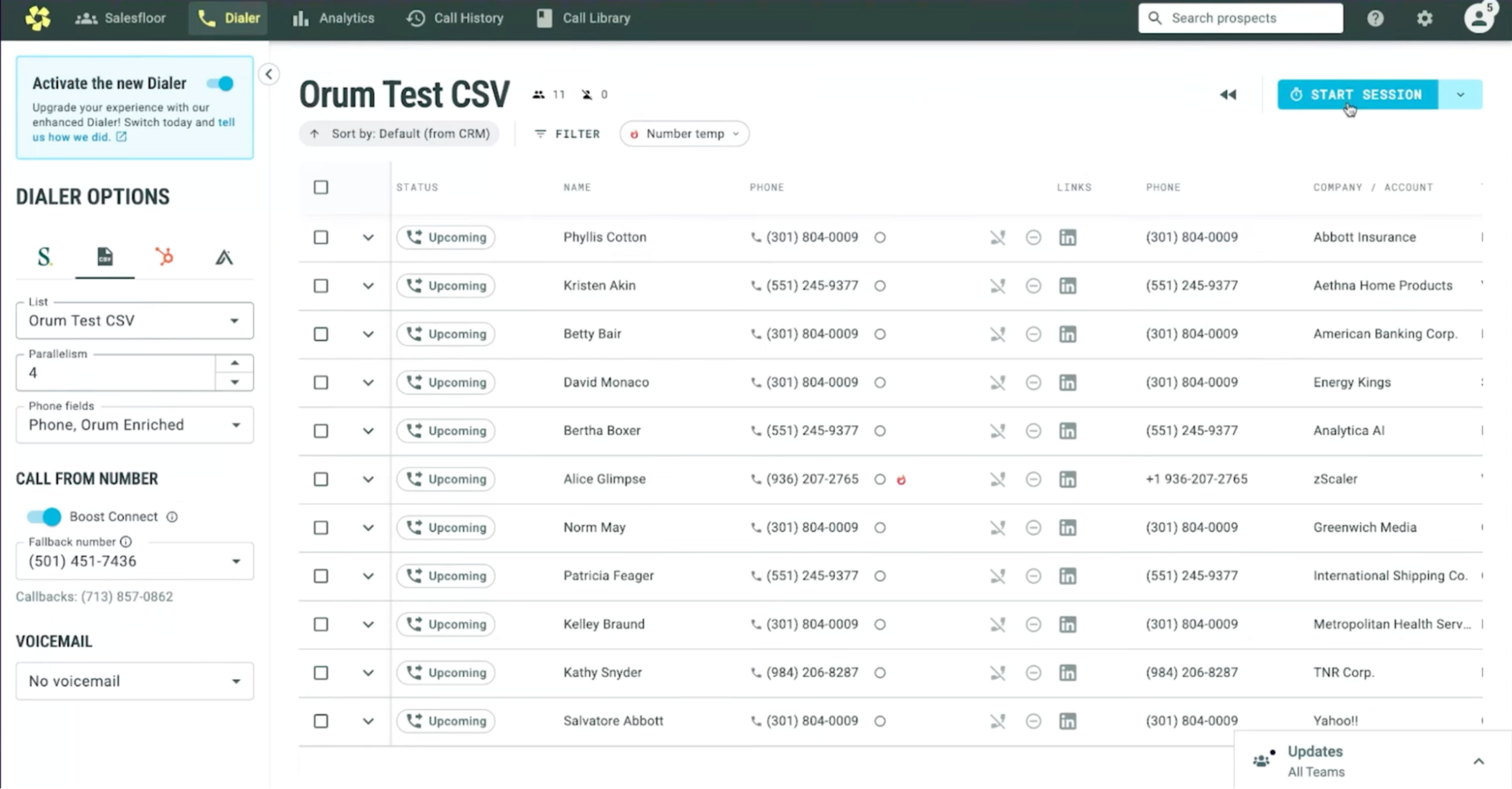
🧠 Did you know?
Orum’s AI-powered dialer is the most powerful in the industry. Orum has facilitated more than 200 million calls, getting sales reps into more conversations, faster.
Bridging communication gaps between sales and RevOps teams
Sales teams rely on timely insights to prioritize leads and close deals, while RevOps needs accurate data to provide strategic support. Without clear communication pathways, both teams risk working in silos.
The antidote to poor cross-functional collaboration? Real-time data sharing and analytics. When sales and RevOps have access to the same up-to-date insights, they can align more easily on priorities. Dashboards that shorten time-to-insight are incredibly valuable in the decision-making process.
Orum’s Analytics supports this process by providing a unified view of all key metrics (eg. call volume, connection rates, and SDR performance).
Together, sales leaders and RevOps teams can quickly spot inefficiencies and adjust their strategy accordingly. Whether it’s reallocating resources or targeting high-value prospects more effectively, decisions are always backed by real-time and historical data.
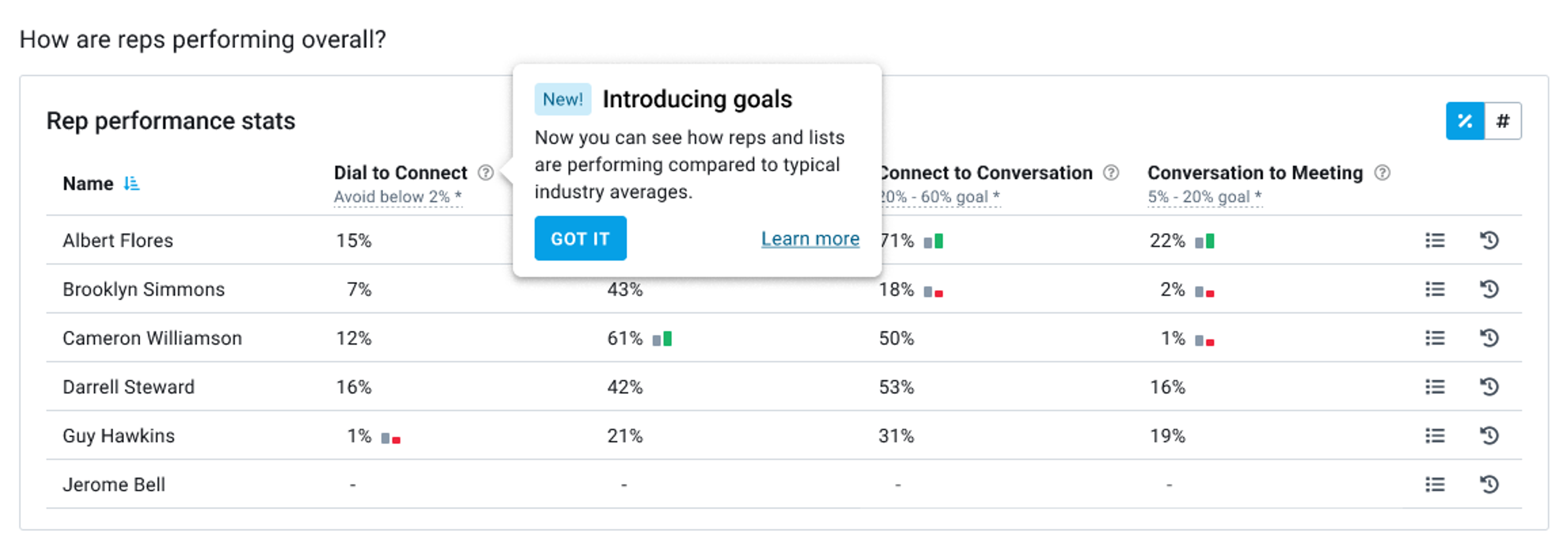
5 key steps to implementing an effective S&OP process
A successful S&OP process starts with a clear roadmap. Each step helps further strengthen alignment between sales, operations, and executive teams. Here’s how to build a strong S&OP plan, step by step.
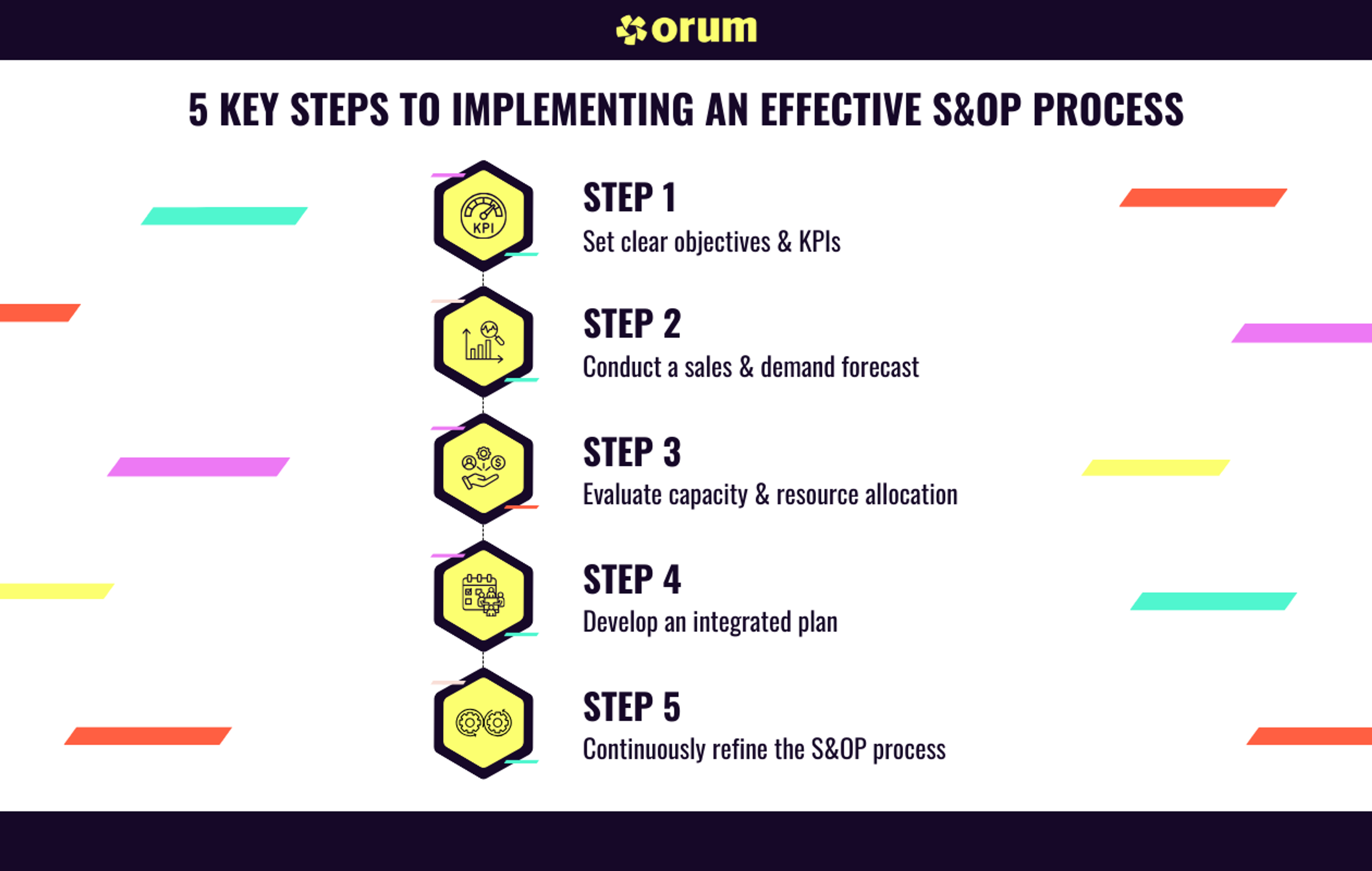
Step 1: Set clear objectives and KPIs for your S&OP process
Before you build an effective S&OP strategy, you need to define what success looks like. Clear objectives keep every team laser-focused, while KPIs help track progress.
Start by identifying your main goal. Are you aiming for more accurate sales forecasts? Better resource allocation? A smoother supply chain management? Successfully launching a new product in the next 12 months? Your S&OP process should be designed around these priorities.
After that, you can select KPIs that help you measure impact. Common metrics include:
- Forecast accuracy: How close are predictions to actual sales?
- Sales pipeline velocity: How quickly do deals move through the funnel?
- Inventory turnover: Are resources being used efficiently?
- Quota attainment: Are SDRs hitting targets?
- Customer satisfaction: Are you meeting market expectations?
Once you agree upon objectives, sales KPIs, and the most important metrics, you can move on to the next step.
Step 2: Conduct a thorough sales and demand forecast
A strong S&OP process starts with knowing what’s ahead. As the first step within this phase, you should analyze historical sales data. Look for trends in past performance to predict future demand. Make sure to factor in seasonality, market trends, and industry changes.
Then it’s time to bring in real-time insights. Use current pipeline data, customer lead time, the latest product development planning, and market conditions to refine your forecast.
As you can imagine, cross-functional collaboration is key here. Sales, Marketing, and Operations should agree on expectations to prevent overpromising or under-delivering.
💡 Pro tip
Sales teams know what’s happening on the ground. Make sure their input is part of the process. This intel can have an enormous impact on the quality of your strategic planning.
Step 3: Evaluate operational capacity and resource allocation
A great sales forecast means little if your team can’t deliver. To meet demand efficiently, you need to assess your operational capacity and ensure resources are allocated where they’re needed most.
Begin with reviewing current capacity. Can your sales team handle the expected outreach? Does your operations team have the resources to support increased demand? Identify any bottlenecks before they become bigger problems.
Next, align resources with priorities. If high-value leads are coming in, sales teams should focus on them and deprioritize the rest. You can use tools like high-volume calling and automation to handle lower-priority outreach. Also, operations should ensure inventory, staffing, and logistics match sales projections.
Step 4: Develop an integrated plan across teams
Integrated business planning helps you outline responsibilities, timelines, and expectations within your organization. It’s a two-way street.
Sales should know what operations can deliver, and operations should be prepared for sales projections. Finally, Finance and RevOps need to have visibility into both to optimize budgeting and resource allocation. Transparency is extremely important.
🗒️ Key takeaway
A unified plan connects sales projections with operational capacity. If Sales expects a spike in demand, Operations needs to prepare resources accordingly. Likewise, if there are supply chain disruptions, Sales should adjust targets to reflect what’s realistically achievable. But when you work together efficiently, you can decrease sales turnover over time.
Step 5: Review and refine the S&OP process regularly
An S&OP plan isn’t something you set once and forget. Market conditions shift, sales cycles fluctuate, and operational challenges arise. You need to continuously analyze performance data to see what’s working and what’s not.
Additionally, it’s important to look beyond dashboards and ask each team member what’s helping or slowing them down. Always keep in mind that the process needs to be optimized to serve each stakeholder.
💡 Pro tip
Think about how you can leverage automation tools and AI-driven analytics to continuously refine your S&OP. With software that enables real-time sales tracking, you can stay proactive instead of reacting after problems occur.
Best practices for driving S&OP success in phone-driven sales
For S&OP to work in phone-driven sales, teams need three things: The right tools, clear processes, and strong alignment. Here’s how to make it happen.
#1 Analyze call performance data to forecast sales demand
Accurate forecasting starts with data. In phone-driven sales, call performance metrics provide valuable insights into pipeline health, lead quality, and rep productivity.
Orum Analytics helps you understand past performance while proactively shaping future results. It centralizes all relevant data and gives a clear view of connection rates, call outcomes, and conversion patterns.
Knowing what hinders your growth helps with financial planning. It’s how you make more accurate revenue forecasts and organize your budget for the biggest return on investment.
For example, having insights into individual rep performance allows managers to immediately spot coaching opportunities and prepare SDR training. This is how you improve both individual outcomes and overall sales efficiency.

#2 Streamline high-volume outreach with automation tools
Manual dialing slows your sales team members down and can take a toll on their motivation. Why would you want them to waste valuable time on unanswered calls? Automation tools like Orum’s parallel dialing eliminate this friction.
Thanks to AI, your sales representatives get instantly connected to live prospects. More relevant conversations mean more closed deals.
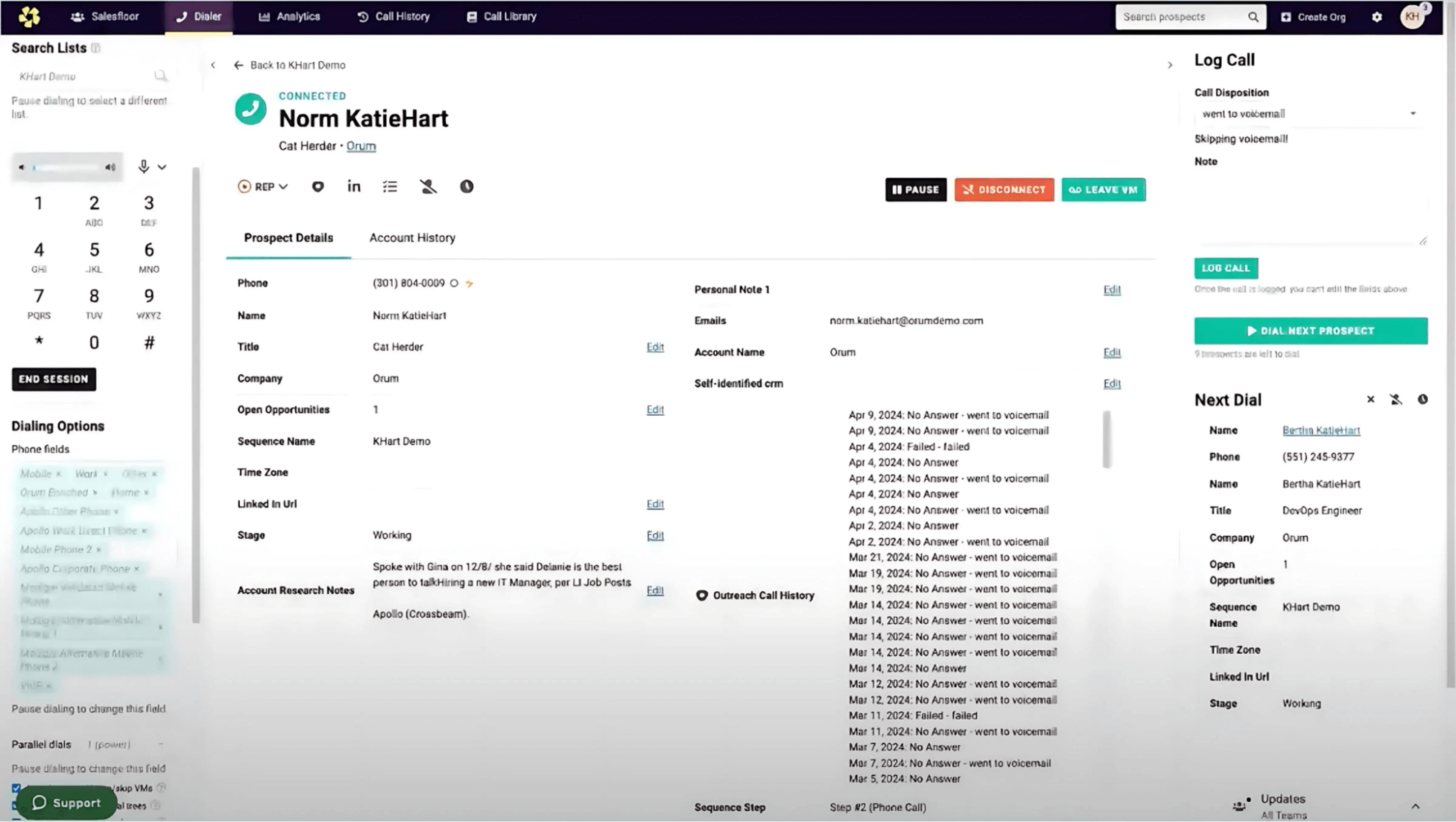
#3 Adjust outreach strategies to respond to shifting market dynamics
Market conditions change fast, and your sales team needs to keep up. This is also where looking at data helps. More precisely, analytics can empower you to:
- Identify the blockers keeping your sales team from booking meetings
- Uncover areas for improvement with key performance metrics and advanced filters
- Create open feedback loops and set your reps up for success
This is where Orum’s live call analytics and the Call Library for reviewing past calls can play a key role.
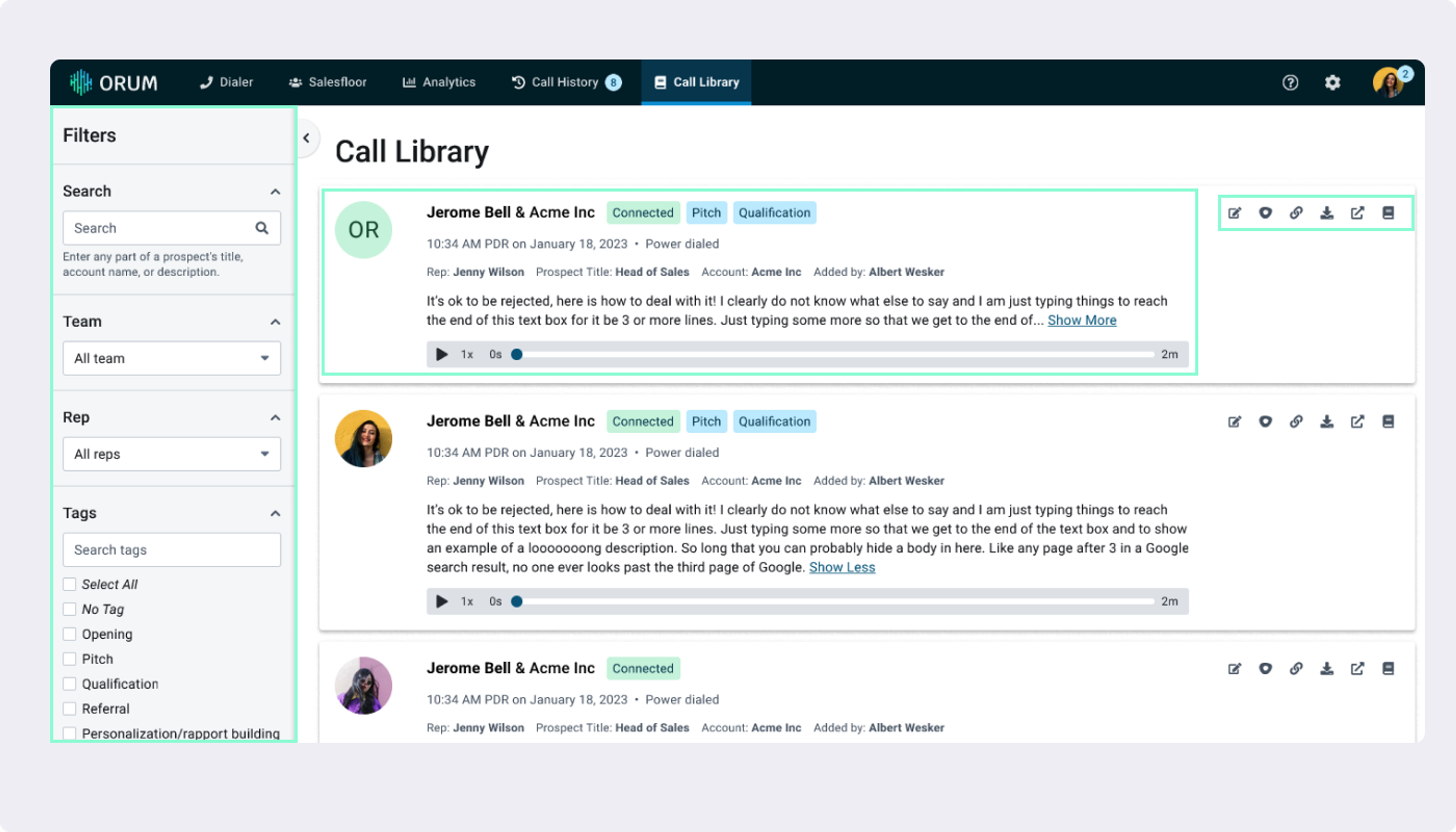
For example, if connection rates drop in a specific industry, your sales team can instantly shift focus to a more responsive segment. Or, if certain scripts aren’t converting, they can tweak messaging and immediately roll out changes. When reps get adequate support, quota attainment becomes more achievable.
#4 Foster collaboration between sales, RevOps, and other departments
When teams don’t communicate, things fall apart. Sales chases the wrong leads, RevOps struggles to optimize processes, and Operations can’t plan ahead.
Take production planning, for example. If Sales expects a surge in demand but doesn’t relay that information, Operations won’t have enough inventory or staffing in place. If Operations cuts production without warning, sales teams are left scrambling with no product to sell. One break or misstep in the communication chain creates a negative ripple effect.
The fix? You guessed it. Access to data (both historical and real-time) and clear workflows. Here are a few examples of well-set workflows.
Sales forecasting → Inventory management and procurement:
| Workflow overview | Why it works |
|---|---|
| Sales shares updated demand forecasts with supply chain management and procurement teams on a rolling monthly basis. Inventory levels are reviewed against forecasted sales, and procurement adjusts orders accordingly. | If Sales expects higher demand, procurement can secure materials in advance, avoiding stock shortages or rush fees. If demand slows, inventory planning prevents excess stock and wasted resources. This is how you make sure you stay on top of supply chain planning. |
Lead prioritization → Sales execution:
| Workflow overview | Why it works |
|---|---|
| RevOps reviews call performance data weekly to refine the lead scoring model. Sales reps automatically receive an updated call list, prioritizing high-intent leads for better conversion rates. | There is a constant flow of relevant information. Reps can focus their efforts where they matter most. This not only increases productivity but also improves morale because of faster wins and more meaningful conversations. |
Customer feedback → Product and Sales alignment:
| Workflow overview | Why it works |
|---|---|
| Sales reps log common customer objections and feedback in the CRM after calls. RevOps applies these insights and identifies recurring themes around pricing, features, or competitors. This data is shared with product and marketing teams in a monthly S&OP meeting. | With a continuous feedback cycle, sales, product, and marketing teams stay fully aligned and in touch with customer demand. This increases customer satisfaction while protecting your competitive edge in the market. |
#5 Centralize data to eliminate silos and improve decision-making
Accurate, relevant data is just as important as the democratization of that data.
When data is scattered across different systems, your team wastes time searching for information instead of acting on it. This is why creating a single source of truth and enabling access for all stakeholders matters.
Orum integrates with platforms like Salesforce, Salesloft, Outreach, HubSpot, and Gong to keep all your data in one place. No more scattered call logs or outdated insights. Every executive team member gets access. This means Sales, RevOps, and leadership can make informed decisions, stay aligned, and move faster.
Don’t underestimate the power of a strong S&OP process
If your SDRs have a go-getter mentality, they also might feel bored by creating and following processes. While having a bias for action is great, strategic alignment ensures these efforts are directed to the right place.
It also helps with distributing bandwidth through smart task allocation. When one team is stretched too thin, everything slows down. Sales struggles to hit targets, operations can’t keep up, and RevOps scrambles to fill the gaps.
A strong S&OP process prevents this by 1) giving every team the data they need to make the right decisions and 2) providing clarity on how each team impacts each other and the business.
As the final takeaway, remember this: Success is built with a team of A-players, well-thought-out procedures, and tools that enable your people to do their best work. Creating an S&OP plan is not a one-time fix, but an ongoing strategy for sustained growth.
Use real-time insights to align S&OP
Orum helps sales and RevOps teams stay connected with automated dialing, live analytics, and seamless integrations, so you can prioritize the right leads and drive growth.





